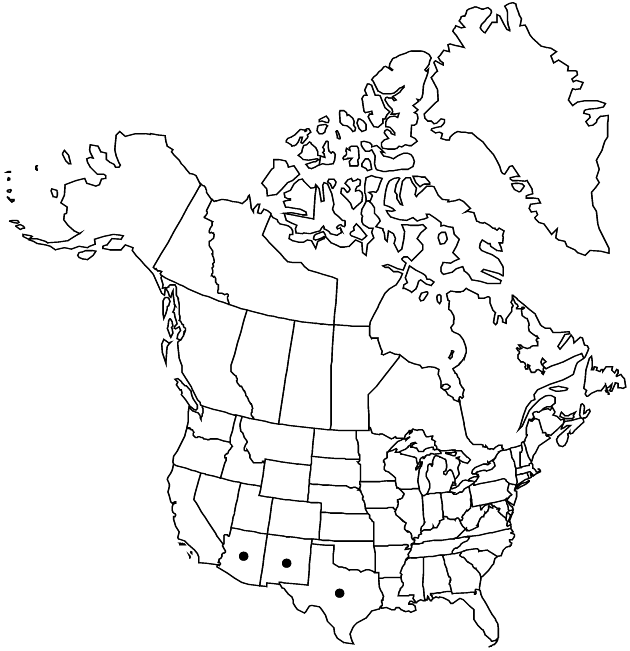Difference between revisions of "Brickellia baccharidea"
Smithsonian Contr. Knowl. 3(5): 87. 1852.
FNA>Volume Importer |
imported>Volume Importer |
||
| (5 intermediate revisions by 2 users not shown) | |||
| Line 6: | Line 6: | ||
|place=3(5): 87. 1852 | |place=3(5): 87. 1852 | ||
|year=1852 | |year=1852 | ||
| + | }} | ||
| + | |special_status={{Treatment/ID/Special_status | ||
| + | |code=E | ||
| + | |label=Endemic | ||
| + | }}{{Treatment/ID/Special_status | ||
| + | |code=C | ||
| + | |label=Conservation concern | ||
}} | }} | ||
|basionyms= | |basionyms= | ||
| Line 32: | Line 39: | ||
-->{{#Taxon: | -->{{#Taxon: | ||
name=Brickellia baccharidea | name=Brickellia baccharidea | ||
| − | |||
|authority=A. Gray | |authority=A. Gray | ||
|rank=species | |rank=species | ||
| Line 46: | Line 52: | ||
|publication title=Smithsonian Contr. Knowl. | |publication title=Smithsonian Contr. Knowl. | ||
|publication year=1852 | |publication year=1852 | ||
| − | |special status= | + | |special status=Endemic;Conservation concern |
| − | |source xml=https:// | + | |source xml=https://bitbucket.org/aafc-mbb/fna-data-curation/src/2e0870ddd59836b60bcf96646a41e87ea5a5943a/coarse_grained_fna_xml/V19-20-21/V21_1243.xml |
|tribe=Asteraceae tribe Eupatorieae | |tribe=Asteraceae tribe Eupatorieae | ||
|genus=Brickellia | |genus=Brickellia | ||
Latest revision as of 21:09, 5 November 2020
Shrubs, 100–150 cm. Stems (ascending) branched, pubescent, sometimes glandular-pubescent. Leaves alternate; petioles 4–10 mm; blades 3-nerved from bases, rhombic-ovate, 10–40 × 10–20 mm, bases cuneate, margins laciniate-dentate, apices acute to obtuse, faces glabrate or gland-dotted. Heads in dense, paniculiform arrays. Peduncles 5–40 mm, pubescent. Involucres narrowly campanulate, 7–11 mm. Phyllaries 35–40 in 5–7 series, 3–5-striate, unequal, (glabrous, ± chartaceous) margins narrowly scarious (apices acute to acuminate); outer ovate, inner lanceolate. Florets 16–17; corollas cream, 6–7 mm. Cypselae 2–3 mm, pubescent; pappi of 18–24 white, barbellate bristles. 2n = 18.
Phenology: Flowering Oct–Apr.
Habitat: Sandy to granitic soils, limestone slopes, granitic cliffs
Elevation: 500–1600 m
Distribution

Ariz., N.Mex., Tex.
Discussion
Of conservation concern.
Selected References
None.